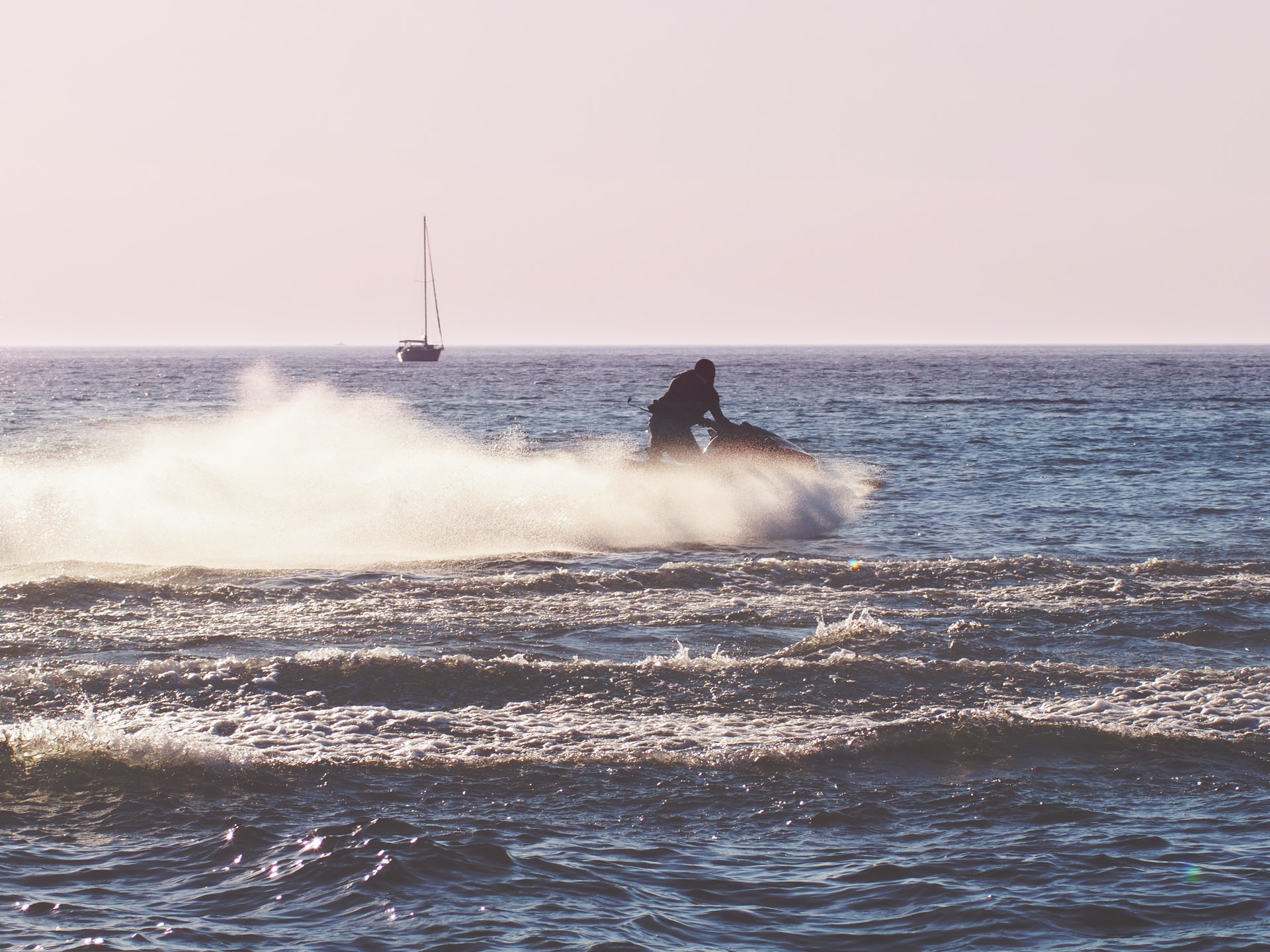If a motorboat is crossing paths with a PWC, what action should be taken? This is one of the trickier questions you may come across when practicing for a Boat Ed exam. Below, we’ll be giving you the answer, then following up with some more in-depth information on the topic.
The Answer
This is often a multiple choice question and the possible answer you’re prompted to choose from are:
- The motorboat should slow down and let the PWC pass because the PWC is smaller.
- The PWC should speed up and attempt to cross in front of the motorboat.
- The vessel on the port (left) should give way.
- The slower-moving vessel should give way.
The answer is C: The vessel on the port (left) should give way.
A PWC should abide by the same rules and regulations that are applied to any other powered boat or vessel on the water. These are similar to the road rules that motorbikes and cars have to follow.
In case a motorboat is crossing paths with a PWC, the vessel crossing from the port side should always make way. Although this is the specified rule, it can be dismissed if it compromises safety.
Both operators of the motorboat and PWC are responsible for avoiding an accident. If either one needs to overlook this rule to prevent losses, then so be it.
Who Gets the Right of way on the Water?
To determine who has the right of way on the water, you should first understand the following terms:
- Stand-on craft: these are boats that have the right of way. A stand-on craft can maintain its speed and direction while approaching other vessels.
- Give-way craft: these are boats that do not have the right of way. A give-way craft is required to steer clear of the stand-on craft by taking early, considerable measures. As such, these vessels need to change their speed and direction to avoid a collision.
Collision Avoidance Rules for when a PWC Meets a Powerboat
Here are a few collision avoidance rules for when a PWC and a powerboat meet:
A head-on meeting
When a PWC and a powerboat are meeting for a head-on collision, each vessel should move to a starboard position and pass as in a regular pattern of traffic.
Vessels on crossing paths
A PWC on a course to cross paths with another vessel should determine the direction of approach to figure out who has the right of way. As such, if the approach of the powerboat is from the starboard side, then it gets the right of way.
In this case, the boatman of the PWC needs to take early and substantial action to steer clear of the other vessel.
On the other hand, if the other vessel is approaching from the port side, then the PWC enjoys the right of way. In this case, the PWC operator can continue traveling while maintaining speed and course.
To overtake another boat
Overtaking another vessel on waterways is legal to do either on the port side or on the starboard side. The protocol for a vessel overtaking on the starboard side is to sound a single horn blast.
The overtaken vessel has to ensure that the starboard side is clear then respond with a single horn blast to indicate open passage for the overtaking boat.
If the overtaking vessel wants to pass on the port side, then it needs to sound two blasts as a signal. The overtaken vessel should respond with two blasts as well after making sure that the port side is clear for the overtaking vessel to proceed.
Whether you’re overtaking on the port or starboard sides, if the vessel to be overtaken responds with five blasts of the horn, then it’s indicating that the time is not right for a pass.
What are Some Common Violations on Waterways?
There’s a set of rules to follow while driving on a road, and similarly, the waterway has its own rules and regulations. Any vessel operator is expected to abide by these rules, however, violations can sometimes occur. The most common violations include:
- Failure to maintain a proper lookout
- Excessive speeding on the waters
How to Avoid Violations on Waterways
Here are some solutions to avoid violations on waterways:
1. Having a proper lookout
A proper lookout uses sight and hearing to keep an eye on the surroundings and identify possible risks of collision with other boats or obstacles.
This lookout should be someone other than the boat operator, typically, a fellow passenger. The lookout should help the boatman stay alert for swimmers, oncoming vessels, and other possible hazards.
2. Operating at a safe speed
Just like highways, waterways also have speed limits that boat operators mustn’t exceed. If traveling in a region where such limits aren’t specified, they should still operate should at safe speeds.
This allows enough time for operators to take proper and effective actions to avoid collisions and stop vessels at a safe distance from unexpected hazards and obstructions.
3. Determining the position and course of direction
To determine who gets the right of way, you need to observe the position of each boat relative to the other vessels on the water through the navigation sectors concept. These sectors are:
- The port sector
- The starboard sector
- The stern sector
4. Identifying potential risks of collision
A good boat operator should use every possible means to identify potential risks of collision. These means are mainly “looking” and “listening”, but if sight and hearing can’t confirm the possibility of a collision, then the operator should assume there’s an existing risk and take appropriate safety measures accordingly.
Wrap Up
The answer to the question “a motorboat is crossing paths with a PWC, which action should be taken?” is that the vessel crossing from the port side should always make way. Although this is the specified rule, it can be overlooked if it compromises safety.

